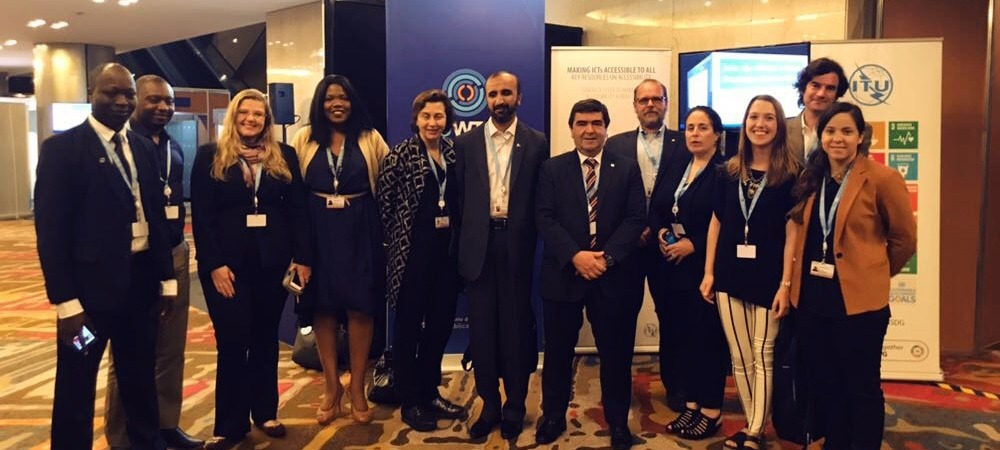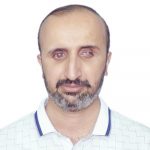It’s been 5 months since WTDC17 concluded and I had time to reflect on the outcomes of the conference and the experience itself. WTDC sets the ITU’s development agenda and in Argentina last October over 1000 government delegates from close to 135 countries gathered during the two-week period. They were there to discuss a range of issues and shape the development sector’s priorities for the next four years. For me, it was a trip of many firsts: my first experience as an observer participating in a multilateral conference; my first trip to South America; and, as a visually impaired person, the eighteen hours flight duration was my first such experience.
To recall, I was a member of the Internet Society delegation as a Fellow. For me, the two motivators to apply for the fellowship opportunity were: first, the theme for WTDC17 (“ICTs for Sustainable Development Goals”) and possibility to make a difference. Second, my quest to learn even more about Internet Governance processes and to participate in the discussions.
WTDC17 had a packed agenda that included ceremonial events marking the 25th Anniversary of the Development Sector and side events on a range of Sustainable Development Goal (SDG) topics.
My blindness posed a challenge, but not enough that we could not overcome it except in a few cases. Nonetheless, one challenge that we could not bridge was related to the accessibility of the “ITU Sync Tool” with my screen reader. It is the tool participants can use to access the conference documents. Despite the efforts by the ITU technical staff there was no immediate fix. The only solution was to rely on my fellow delegates to share the documents with me. I hope the issue has been fixed in the 6 months since then, because it was disappointing not to have the required updated documents available while they were being discussed in the sessions.
Another misperception that I tried to change was the low expectation that people had about people with disabilities (PWDs). With my participation I hope that more people understand that PWDs are just people who cannot see, hear, or have physical impairment. Any impairment is a physical characteristic, but it is not the characteristic that defines them or their capabilities. Plus, it is the societal barriers that turn an impairment to disability. Therefore, policy makers and technologists should work with PWDs to remove the ICT-related policy and technical barriers in our quest to shape a better tomorrow.
At the same time, a sad fact that I observed during the conference was the very low participation of PWDs. There was a lot of discussion on accessibility-related issues in a number of resolutions, which would not have been possible without input from PWDs. However, there was not a single organization that highlights mainly issues of PWDs. Therefore, PWDs should also realize that they need to come out of their comfort zones; get themselves composed and united; participate in such conferences and forums; and raise their voice to resolve their issues. I am a firm believer of the dictum “nothing about us without us” meaning that no one can express the problems and issues of PWDs better than PWD themselves and no solution should be implemented or can be successful without our active participation. However, PWDs themselves need to be fully prepared and participate in these discussions actively. Policymakers have a role to play as well. They should include PWDs on issues related to PWDs in their national preparatory processes and on delegations.
Despite all this, it was a wonderful experience. Most importantly, it was collectively a challenging, thought provoking and exciting opportunity. It led me to think about how I could best improve myself. and what more can be done to improve ICT accessibility for PWDs. It also taught me how to make the best of whatever opportunity and circumstances you have. One of the most exciting parts about this experience was sharing my WTDC17 experience with members of the Internet Society’s Islamabad, Pakistan Chapter.
Having navigated the ITU system for about a year and having attended WTDC and experienced most of the accessibility related issues myself, I believe that it is high time that the ITU designate a focal point for telecommunication/ICT accessibility for persons with disabilities to strengthen the Digital Inclusion programme and to make ITU conferences more inclusive and accessible for us. This will allow PWDs to raise the accessibility-related issues within ITU and will save them the time and resources to log their request at the right forum. The issue emerged during WTDC17 under Resolution 58 (“on telecommunication/information and communication technology accessibility for persons with disabilities, including persons with age-related disabilities”) and consensus was reached to take it to the 2018 ITU Plenipotentiary Conference (PP-18) in October as this body adopts the ITU’s four-year strategic and financial plans.
Since regional and national preparatory meetings for PP-18 are underway, one can hope that a focal point is designated within the ITU to deal with accessibility related issues. Moreover, to achieve the goals for ITU’s Connect 2020 global agenda and the SDGs, which reference ICT accessibility for PWDs, the issues need to be identified and highlighted. And, I am sure that having a focal point for accessibility would ease the process.
In a nutshell, I am happy to say that the promise that technology holds for enhancing people’s lives is extraordinary. However, it is equally true that technology, if not appropriately-designed and implemented, is the biggest threat to an inclusive digital future. Harnessing the extraordinary promise of technology is within our reach, but it will take leadership, commitment, and ongoing oversight. The alternative is a future where we spend our time, money, and innovative capacity retrofitting bridges to patch the digital divide rather than enjoying the economic and social advantages gained by the increased usability of technology and the increased leveraging of human capacity that results from technology that is designed and built to be accessible to all. I would reiterate my earlier statement that “if we want to build a digital future where people come first, accessibility needs to be at the heart of Internet policy, planning and design”.
Read more about Digital Divides in the 2017 Global Internet Report: Paths to Our Digital Future.
Take action! Help shape a digital future that puts people first.

